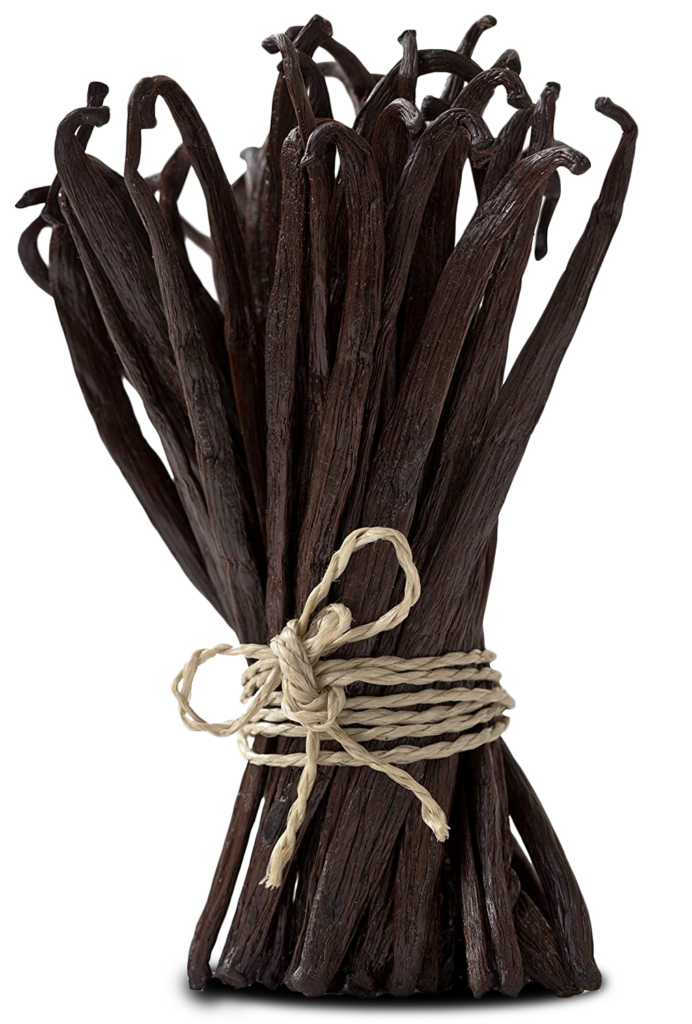Our vanilla
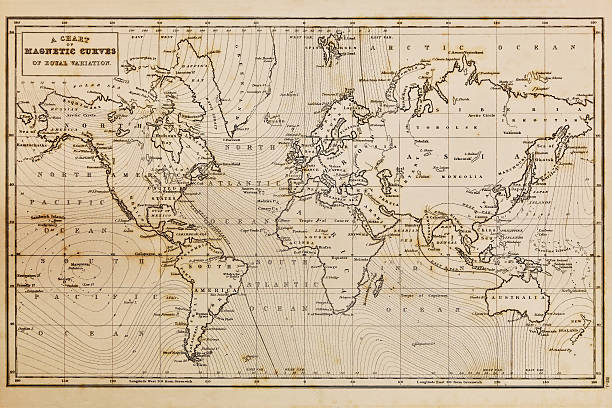
Global vanilla production
Every year, farmers around the world engage in a tireless and dedicated effort to harvest between 2,500 and 3,500 tons of vanilla. These skilled individuals work across the globe, from Mexico to India, bringing us the unique and flavorful treasure of the vanilla bean.
Take note that there are just three types of vanilla beans in the world: the delicate Planifolia, the bold Pompona, and the fragrant Tahitensis.
Indonesian Planifolia Vanilla
Indonesian planifolia vanilla is richly sweet, oily, and remarkably aromatic. These beans are well known for their distinct woody flavor and unique smokiness. Indonesia’s unique micro climates, with winds from the oceans, heat from the sun, dry- & wet seasons and fertile volcanic soil give Indonesian vanilla its distinctive flavor and smell.
Indonesia is widely recognized as a top producer of high-quality vanilla. The vanilla pods owe their exceptional flavor and aroma to the unique curing process used in Indonesia.
Indonesian planifolia vanilla holds up well in heated applications, such as extract, ice creams, and sweet treats. Its smoky flavour and powerful flavour perfectly complement chocolate and barbecue sauces
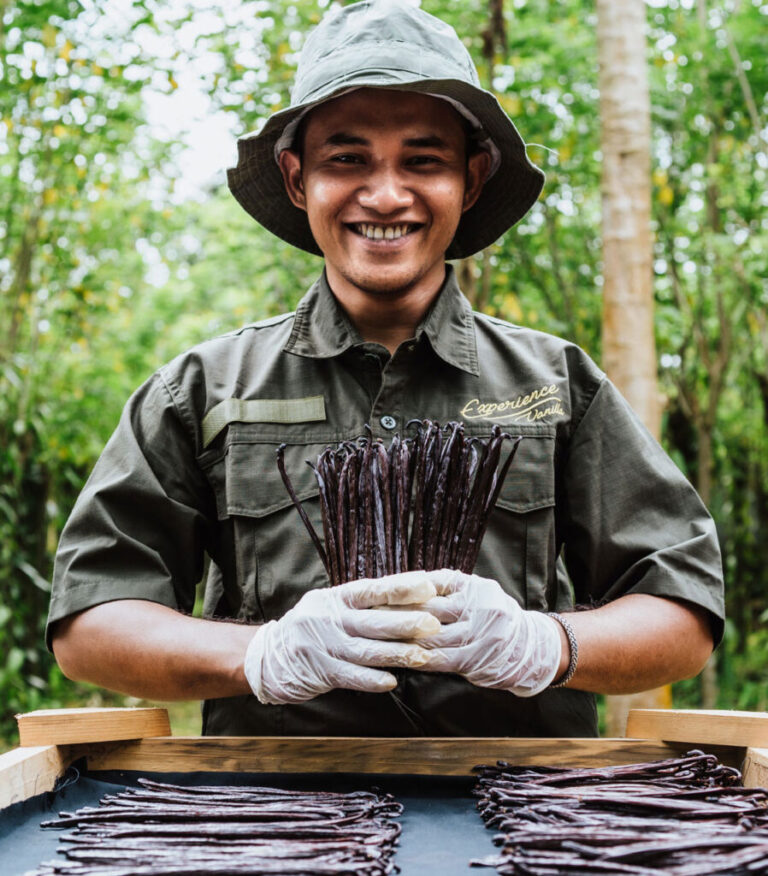
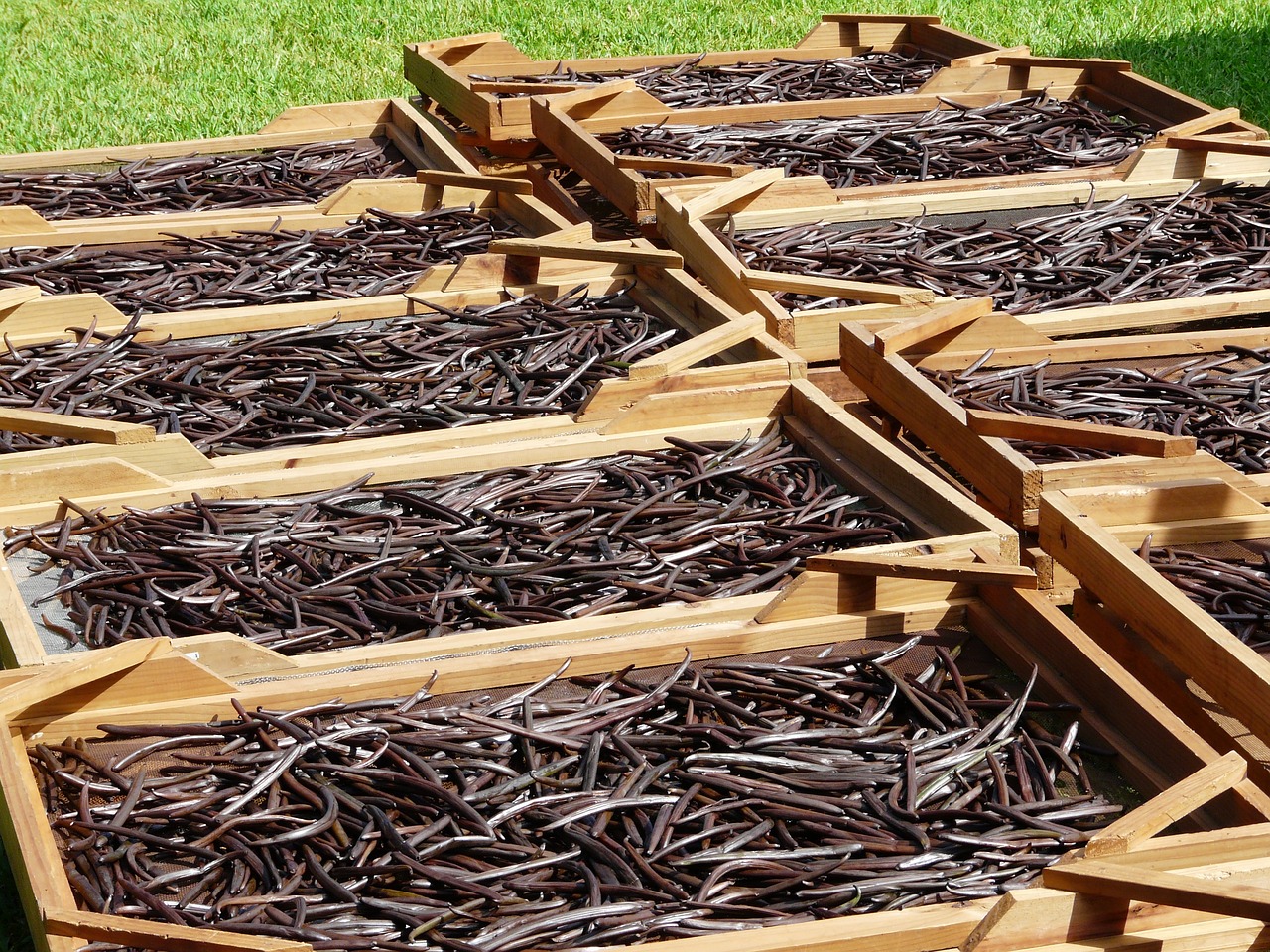
Curing vanilla beans
There are four key stages in the curing process for vanilla beans. When they come off the vine, they aren’t wonderfully shiny and black. Initially, they begin life as green in color, and as they become ripe, their tips begin to yellow. It’s at this point they start to become a little loose from their core mother plant.
Unlike fruits and other berries, Vanilla will stop ripening at the moment it gets picked. Without being left to ripen naturally, the beans will not become the true vanilla as we all know and love it.
If this process is interrupted, the development of the flavors will be prohibited. All that results will be a slightly bitter, sour fruit. As soon as the Vanilla is ripe, the four core phases of curing can commence.
The four stages of curing vanilla
1. Dipping
Curing vanilla beans starts when they are wet. Drying lasts 3-4 weeks to prevent molding, achieved by air-drying and controlling moisture to 25-30%.
2. Sweating
After water removal, workers quickly wrap beans in wool blankets to preserve heat and steam for enzyme conversion. During the two-week sweating phase, warmth is key to prevent mold. Beans are sun-exposed to transform flavor and avoid molding. Rolling continues for up to two months.
3. Drying
Curing of vanilla starts when beans are still quite moist. Drying for 3-4 weeks is critical for mold prevention. Beans are air-dried in the sun and shade, moisture-monitored to prevent overdrying. Massaging of each bean by hand ensures consistent and even drying.
4. Conditioning
The vanilla beans are quite literally bursting with flavor, and they’re nearly ready. At this point, they are put into closed boxes and kept there for at least one month in order to further enhance and preserve their aroma.
600
600 blossoms need to be pollinated by hand to produce 1 kg of green beans
6kg
Approximately 6kg of green vanilla beans are needed to produce 1kg of black beans
24 hours
Is the lifetime of the flower in which it must be pollinated or dies.
A labor of love and patience
From origins in Central America where vanilla was first cultivated by the Totanac people, today the vanilla orchid is grown in tropical climates around the world. Pollinated by hand everywhere except in Mexico, and with flowers that may only be open for one day, cultivation is highly labor intensive.
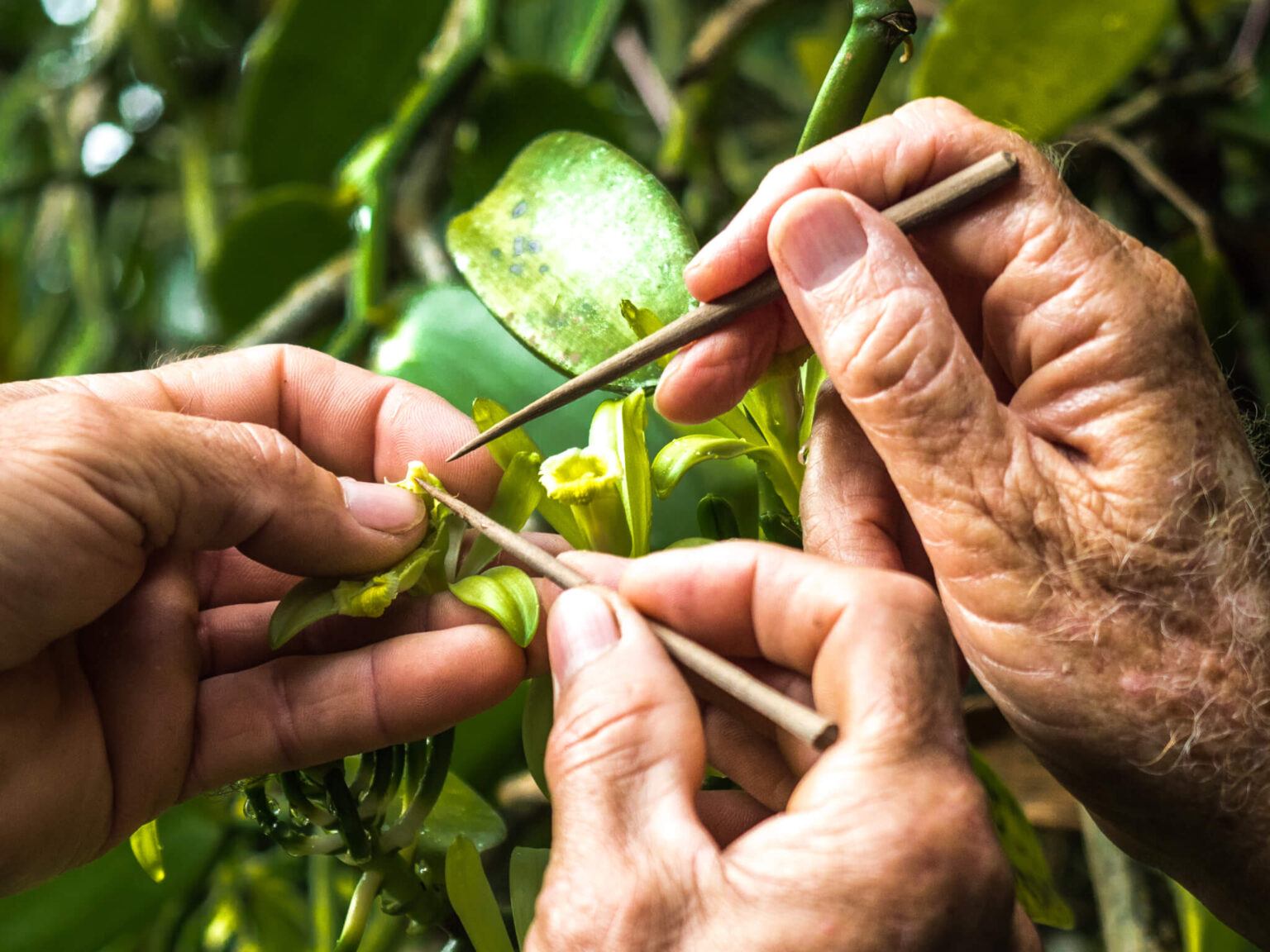
Our Indonesian Planifolia vanilla
Step into a world of endless possibilities. Explore our range of products, grown, nurtured, harvested and cured by our farmers to elevate your experience and leave you craving for more.
